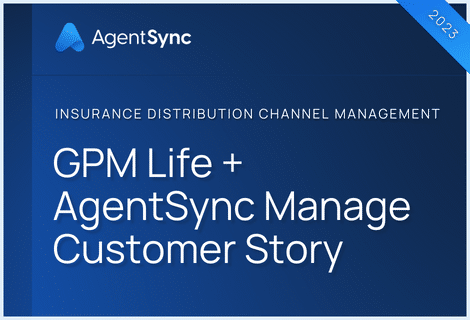

While embedded insurance isn’t an entirely new concept, it’s becoming more popular among companies and consumers. The market is expected to grow more than six times its current size by 2030, and some are even going as far as to call embedded products the future of insurance distribution.
For consumers, embedded insurance could mean getting more affordable and personalized insurance products at a time and place that’s most convenient for them. For insurers, it means creating new revenue streams and lowering distribution costs. For compliance folks, it means adding more complexity to the existing layers of regulation the insurance industry operates within.
What is embedded insurance?
Embedded insurance is any insurance product that consumers can buy while purchasing another product or service.
You’ve probably seen embedded insurance before. Think about the last time you bought an airplane or concert ticket. You were likely asked at some point in the purchasing process if you would like to insure your ticket purchase for an additional fee. This is a common example of embedded insurance that the customer can opt in or out of.
Embedded insurance works because it catches the customer at a time when they’re most concerned with protecting their purchase. It’s kind of like asking “do you want fries with that?” when someone’s already ordering a cheeseburger in that it’s a relatively small additional charge that feels like a big benefit.
Of course, an individual is more likely to add fries to their order at the time of purchase rather than weeks later when they’ve already eaten and forgotten about their cheeseburger. In the same vein, customers who’re purchasing a product are more likely to want insurance to protect that product at the same time rather than weeks later.
What are the benefits of embedded insurance?
Helps close the protection gap
One area in which embedded insurance could have a significant impact is the global insurance protection gap. The protection gap is a term for the gap between the amount of insurance that exists to benefit individuals, households, and businesses, and the amount of insurance consumers actually purchase.
As catastrophic events like natural disasters increase, people’s level of insurance protection for such events doesn’t increase proportionately, widening the protection gap. While embedded insurance won’t singlehandedly solve the protection gap, it can be a useful tool in addressing it, and may even act as a catalyst for wider industry transformation.
For example, some individuals go without the level of home, auto, and even life insurance they need simply because they aren’t thinking about shopping for it. Embedded insurance can simplify the process and increase consumer uptake by offering the type of coverage someone needs at the moment they’re most aware of their need for it.
Improves the purchasing experience
Humans prioritize convenience when making a purchase. Embedding insurance products into a purchase a consumer is already making eliminates the need for the consumer to shop around for a policy separately, saving them time and effort.
For example, let’s say a couple who’s expecting their first child is purchasing a stroller from an online retailer. Since the couple is starting a family, they’ve considered purchasing a life insurance policy but have been far too busy getting ready for the new baby to do any real research. In this scenario, the online retailer might offer embedded life insurance with the purchase of the stroller.
Not only is this method convenient, but it also offers peace of mind to a consumer that they are receiving the right coverage at the right time. Insurance products can be complex and many consumers put off buying a policy simply because they don’t have much understanding of their own coverage needs. Embedded insurance simplifies the process of obtaining coverage.
Embedded insurance improves underwriting and reduces costs
Embedded insurance doesn’t just benefit consumers. It also offers a range of benefits to insurers. For starters, embedded insurance can help insurers reach a new audience of consumers, widening their distribution without significantly increasing costs.
Insurers also gain more access to consumer data through embedded insurance. This enables them to better understand their customers’ needs and preferences, helping them improve underwriting and more accurately predict risk.
Speaking of risk, embedded insurance policies may also reduce an insurer’s risk of fraud. Embedded products are tied to a specific product or service, making them easier for insurers to monitor and track for suspicious activity.
Three compliance factors to consider when offering embedded products
Understanding the complex insurance regulatory environment is one of the biggest challenges of embedded products. Insurance is a highly regulated industry, and companies that wish to offer embedded insurance must remain compliant with various state laws and regulations. There are multiple compliance factors to consider when offering embedded products. Let’s explore three of the most common.
1. Who is responsible for producer licensing?
We all know, in order to sell insurance, you need a valid license, but how does licensing work when the insurance products are embedded within a non-insurance company’s website?
Rather than put in the work to become a full-stack, licensed insurance carrier, a company wishing to offer embedded insurance with their products has a few options for licensing.
Option 1: Become a licensed insurance producer
If a business wishes to sell an embedded insurance product directly through its website, it’ll need to be licensed as an insurance producer. Because transactions will occur online, the company will need a license in all U.S. jurisdictions for each line of insurance it offers.
If the business goes down this route, it’s crucial that it considers all state-specific licensing requirements and that it chooses a designated responsible licensed producer (DRLP) to help ensure compliance with all state insurance laws and regulations.
Option 2: Partner with a third-party licensed insurance producer
Rather than put in the work to become a licensed insurance producer, a business looking to offer embedded insurance products could instead partner with a third-party licensed insurance producer. With this option, the company would provide the platform (typically their website) through which a licensed insurance producer could sell products.
This is a pretty common option among businesses offering embedded products, as it keeps them from having to deal with complex insurance licensing requirements. However, the partnership route does come with some legal limitations regarding how the companies involved are marketing the embedded products, as well as how they compensate the individuals involved.
2. How can embedded products be advertised?
It’s fair to say that anyone offering embedded products will want to communicate those products to their customer base. But how a company markets its embedded insurance products hinges on whether it’s a licensed insurance producer or not. Without a valid license, a business can’t freely discuss certain aspects of their embedded products, as this could be interpreted as selling, soliciting, or negotiating insurance.
If a business chooses to partner with a third-party licensed insurance producer, the licensed company can advertise any aspects of the policy freely. That is, as long as they remain compliant with their state’s various insurance advertising laws and regulations to protect consumers from unfair business practices.
3. Who provides consumer data protection?
The insurance industry is consumer-facing, meaning those operating within it must comply with consumer protection laws like data privacy and fair commercial practices, which often vary from state to state.
With embedded insurance, which involves integrating insurance into different platforms, different entities frequently exchange sensitive consumer data. To protect consumers and prevent any legal ramifications, businesses offering embedded insurance products must ensure their compliance with all relevant data protection laws, including emerging regulations around things like cybersecurity and AI.
When it comes to insurance, compliance is always key
Embedded insurance promises new opportunities for businesses and consumers alike, but its position within the heavily regulated insurance industry means that successful implementation will depend on successful compliance.At AgentSync, we know a thing or two about the importance of compliance, specifically when it comes to your producer force. Our solution enables carriers, agencies, and MGA/MGUs to expand distribution without ever sacrificing compliance. Interested in learning more? Contact us or request a demo today.

